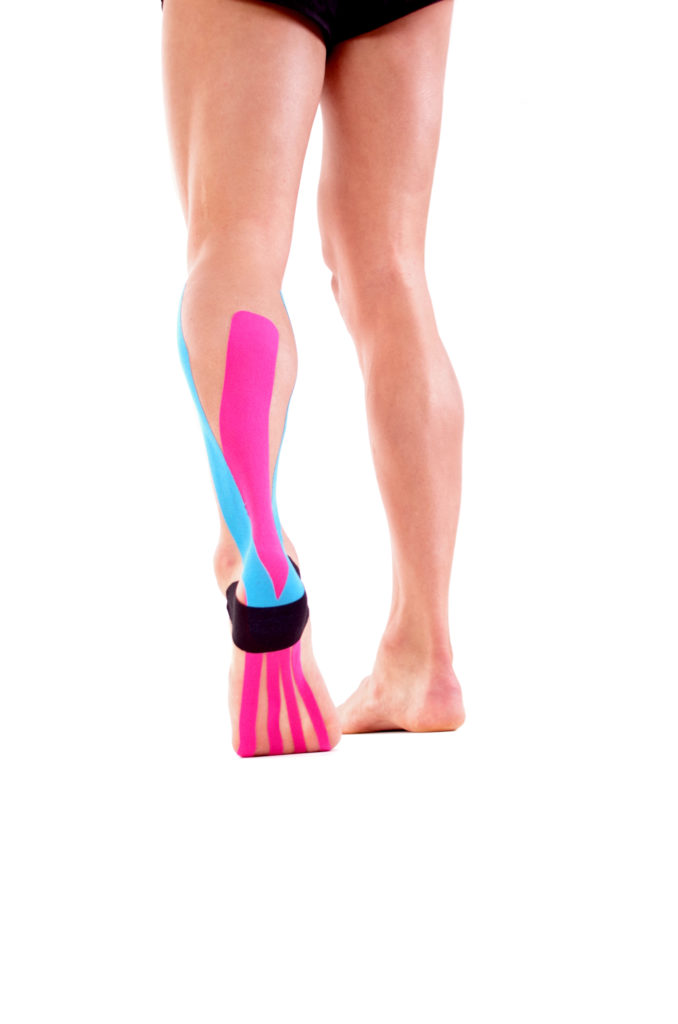

According to a study published by the National Institutes of Health, Kinesio Taping (KT) has been proven effective for both the prevention and treatment of musculoskeletal injuries. It’s also highly effective for treating neuromuscular and neurological conditions. Today, taping is often used in tandem with a multitude of other treatments to deliver the best possible outcome to patients.
The concept of a tape relieving pain is hard for many to grasp. And while the colorful tape graces the bodies of numerous pro athletes, people might wonder – what can it do for me? When we experience trauma due to an injury, or wear-and-tear due to overuse, an excess of lymphatic fluid builds up in the affected region. Inflammation, swelling, pressure and discomfort often follow. KT tape is no ordinary medical bandage; when applied correctly, it can lift layers of the skin, allowing for a better flow of lymphatic fluid. This lymphatic fluid carries invaluable white blood cells throughout the body and helps remove cellular waste products and bacteria.
KT tape has helped both “weekend warriors” and award-winning Olympic medalists get back in the game. It can help athletes muster through physical therapy sessions and compete even when pain is persistent. KT tape is shown to offer speedier recovery of overworked muscles and allow athletes to “play through the pain,” so to speak. While most doctors recommend waiting to play until an injury has healed, KT tape can deter the overstretching or over-contraction of injured muscles to prevent further wear-and-tear. However, it’s always advised to have a pain specialist apply your tape to ensure proper placement.
Injuries KT Tape Can Help With
There’s a reason weakness is referred to as one’s “Achilles heel.” This overused (and large) tendon beginning at the back of the heel faces extreme pressure during many activities and is consequently prone to injury. Achilles tendinitis is one condition that responds well to a multidisciplinary approach to treatment. Applying KT tape, while practicing the RICE method – rest, ice, compression, and elevation – can be a winning combination for those suffering from inflammation, or a degenerating tendon (tendinosis).
One particularly common injury – accounting for up to 29 percent of all lower extremity injuries, is an acute hamstring strain. With pain that ranges from nagging to sharp, hamstring strains can be caused by microscopic tears in the muscle, or in severe cases a complete rupture. Your physical therapist may recommend an application of KT tape, along with icing, rest, and targeted stretches.
If you’re suffering from discomfort, pain, or stiff muscles, KT tape may just be the support you need. Lightweight and easy-to-wear, this tape successfully treats a variety of injuries, including carpal tunnel, tennis elbow, sprained ankles, and shoulder and lower back pain.
Delaware Back Pain & Sports Rehabilitation Centers offer a host of advanced nonsurgical healing treatments, from platelet-rich plasma (PRP) therapy to myofascial release. With a warm bedside manner and wealth of knowledge, their team of experts will work with you to achieve the best possible results for your unique condition. For more information, or to schedule an appointment, visit www.delawarebackpain.com to find the location nearest you.


